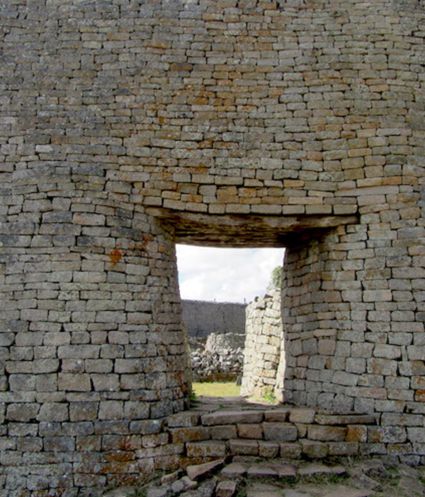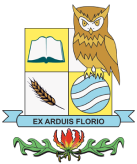Great Zimbabwe Form One Trip 2022

The Humanities Department organised an educational tour to Great Zimbabwe from 16th to the 18th of June. We were all enthusiastic to go to the monuments since we hadn’t been there before. We departed at the first flash of the morning. We had a safe, long and exhausting journey to Masvingo. We reached our destination when the sun was now dipping below the horizon, the last gasp of beauty before the death of the day. Clevers Lakeview Resorts and Hotels hosted us for two nights and one day. We were given a warm welcome by the reception and introduced to our tour guide from Errant Travels and Tours, Annie. The hotel was magnificent. Since everyone was weary, we were escorted to our rooms where we freshened up and had a sumptuous meal prepared by the amazing chefs.
The next morning we set off to the captivating ancient city. When we got to the Great Zimbabwe Monuments we were introduced to Mr Lovemore, who was our tour guide for the following two hours. First, we all gathered at a huge placard which exhibited the areas at the monuments. From there we went to the Hill Complex which was steep and difficult to ascend for some who hadn’t been doing regular exercises. Mr Lovemore was walking at a brisk pace. He started educating us about the history, that the construction began in the eleventh century and continued till the fifteenth century. The name of our country was derived from the name of the ancient city which was built of stones and means house of stone-Dzimba-dzemabwe. The most unique thing about Great Zimbabwe is that it was built using granite stone without any mortar. It’s also said that eighteen thousand tonnes of granite stone were used in the construction of the walls. At it’s peak it had a citizenry of eighteen thousand to twenty-four thousand. In those years the King was considered a mountain, such that the day he died they used to say “The mountain has fallen” or “Gomo rawa” in Shona. When the King died they also used to destroy his house and construct a new one for the new King. In the past, Nyatsimba Mutota had about two hundred wives. We went to the cave where he would go and call his wives in a valley below. His voice reached the Valley since it echoed all over the valley. We left for the top where we could see Lake Kyle also known as Lake Mutirikwi and far flung areas and corners of Great Zimbabwe Monuments.
After that we went to the Great Enclosure where the King’s first wife stayed. From there we set off for the village where some of us were buying souvenirs made by the local people like bracelets, baskets, necklaces and clay pots. At the village we also saw old people who danced the traditional Mhande dance. We all complimented them and gave them some money as a sign of appreciation. Next we went to the one and only conical tower l. Patterns on the walls of Great Zimbabwe ruins include chevron,herringbone and vertical grooves. Everyone was amazed to see the astonishing and prestigious feature of the Zimbabwean currency. We went to the museum lastly but we were not permitted to take any pictures. We saw some ancient tools like spears, bows and arrows. There were eight birds carved in soapstone which are one of Zimbabwe’s national symbols found on the national flags and many more. The most prevalent theory is that they were emblems of royalty. Immediately after the visit to the museum, everyone trotted to the bus. We had lunch back at the hotel and after an hour we departed for Lake Mutirikwi.
In about thirty minutes we arrived at Lake Mutirikwi. Annie taught us that it took two years to construct the Lake Mutirikwi from 1958 to 1960. The ltalians were the constructors of the Lake. It was for irrigation only, but now they are in the process of making it a Hydroelectric Station for Masvingo Province. We also learnt that Lake Kyle is now Lake Mutirikwi since the Shona people thought of giving it a name they understood. Soon after that, we went to the small Italian Chapel, De Andrews Chapel, built in Memory of Marie Van Graan who died in 1870. She wanted a Chapel but died before her wish was fulfilled but the parents finished building it. It only accommodates twelve people. We had an enjoyable but exhausting day. In the evening we were given our tour t-shirts to wear the following day on our journey back home. The following day we were ready to depart from the Hotel. We went to Lake Kyle Recreational Park. We saw the white rhinos, namely Valentin, Mai Mau, Mau, Jack and Lucy. We also saw Lions, Giraffes and Zebras. From there we made our way back home.
To be honest l truly enjoyed everything about the trip. I couldn’t believe that it was the last day seeing Annie. She was a bubble in a champagne bottle. I want to thank the Headmistress, Mrs Benzon, the Deputy Head, Mrs Mugomo and the Humanities Department for giving us a chance to visit the ancient city. Thanks to our teachers, Mr Masunda, Mr Marichi, Mrs Mubobo and Ms Madondo. Special thanks to Errant Travels and Tours.

.png)